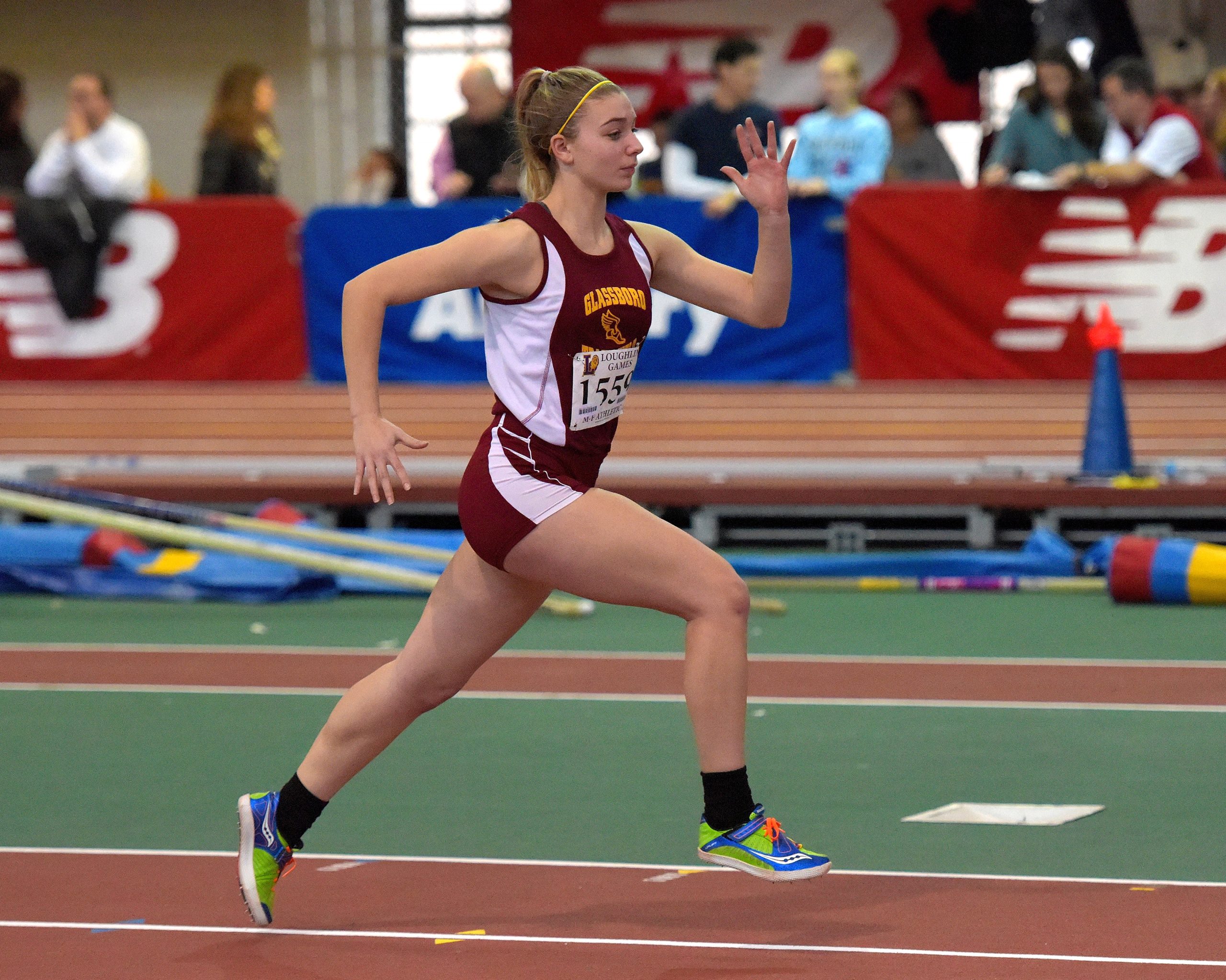Chapter 8: Plyometrics, Speed, Agility, and Quickness Training Principles
Speed
Amanda Shelton
Speed
During speed based activities we are practicing move the body in one direction as quickly as possible. With speed training, there is no change of direction – you are working on going directly from point A to point B in as little time as possible.
We can quantify speed as a relationship between your stride rate (the amount of time between steps you take) and your stride length (the distance between steps). Changes to either one of these variables will have a direct impact on your speed, though there is a point of diminishing returns when it comes to your stride length. For example, if the length is too long the load on the lower body can change, putting you at risk for injury.
Sprint Mechanics

“Indoor Track and Field – Bishop Loughlin Games” by Steven Pisano is licensed under CC BY 2.0
When examining proper sprint mechanics, we are looking for the lumbar spine to be in a neutral position along with a distinct patter for the two contralateral lower limbs to follow a specific pattern of movement to maintain optimal form.
Triple Extension
The back leg will be in what we call triple extension. When looking at the image above, you can see that the hip is in extension, the knee is in extension, and the ankle is in plantar flexion.
Triple Flexion
The front leg will be in what we call triple flexion. When looking at the image above, you can see that the hip is in flexion, the knee is in flexion, and the ankle is in dorsiflexion.
The Transition
As the sprint pattern occurs, front leg will extend back while making contact with the ground at the foot and pushing forward into hip extension, knee extension, and ankle plantar flexion as the back leg drives the knee forward with hip flexion, knee flexion, and ankle dorsiflexion. Alternating triple extension and triple flexion on opposing limbs to propel the body forward.

